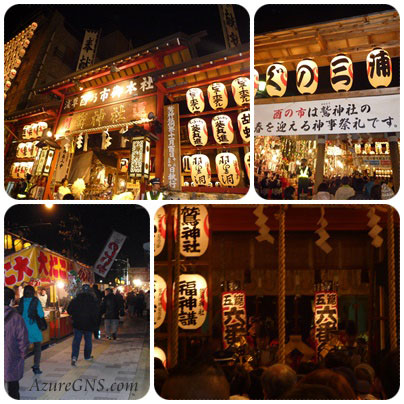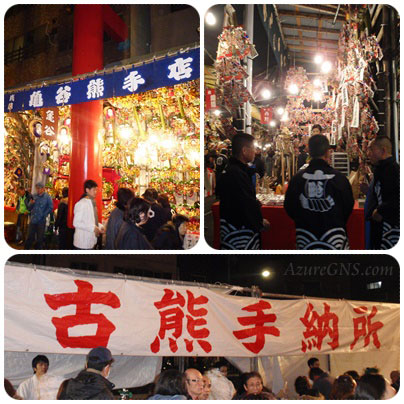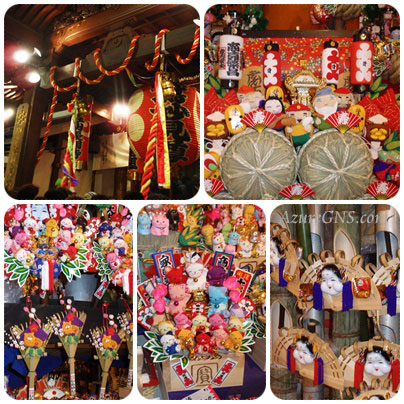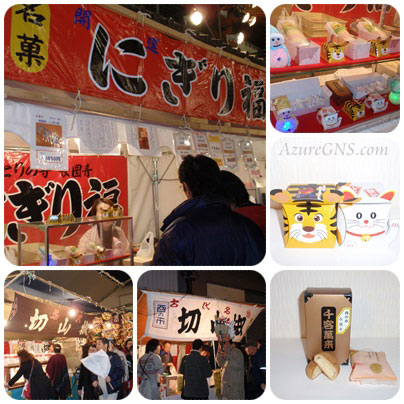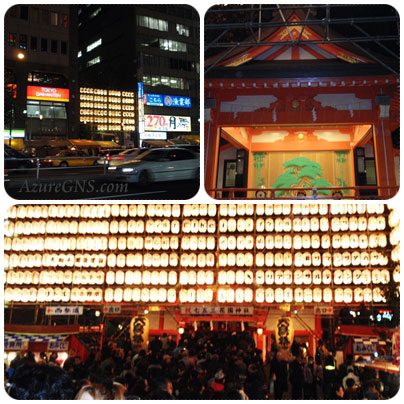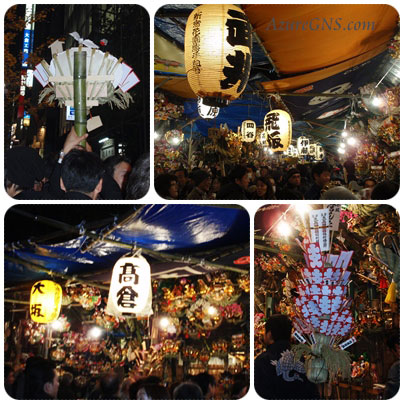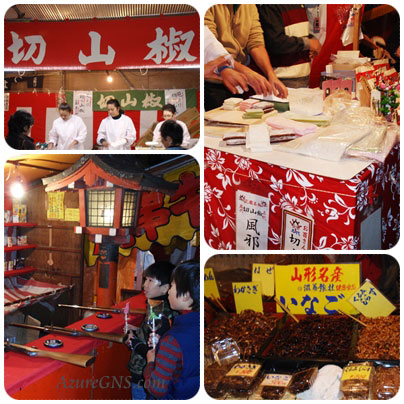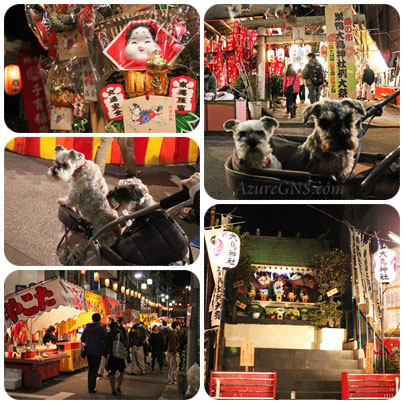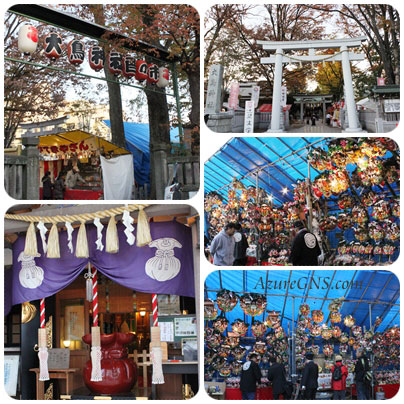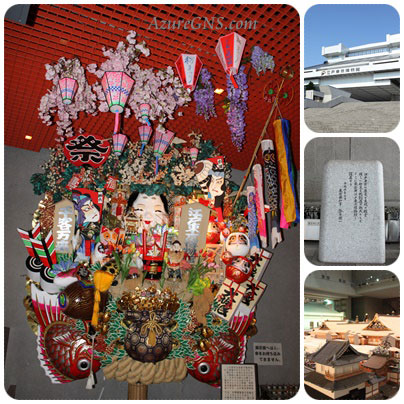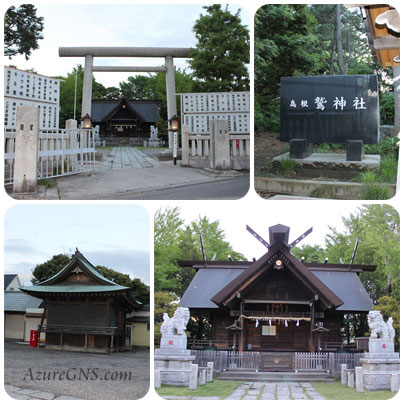Wagaya no Tori-no-ichi;
Our Rooster Festival Experience
失われていく東京の下町風情を未だに色濃く残す浅草から北に10分ほど歩くと、「おとりさま」の名前で知られている鷲神社(おおとりじんじゃ)があります。1868年(明治元年)に明治新政府が布告した「神仏分離令」により、隣接する長国寺から独立した神社です。こちらの酉の市は、江戸時代(1603-1868)中期発祥で、現在では100万人ほどの人々が福を求めて集まるそうです。真夜中の0時に祝詞(のりと)を社前で受け、多くの参詣者と共に三本締めをして、お手綱を引いて鈴を鳴らした後、拍手を打ってお参りしました。
Otori Shrine, known as “Otori-sama”, is within about a 10-minute walk from Asakusa with a typical atmosphere of old Tokyo though it has been gradually disappearing in other places. Otori Shrine became independent from an adjacent temple, Chokoku-ji by “Shinbutsu Bunri-rei” (the Ordinance Distinguishing Shinto and Buddhism). Tori-no-ichi (the Rooster Festival) in this shrine started in the middle of the Edo era (1603-1868), and around a million people join the festival in pursuit of happiness today. We received a ritual Shinto prayer in front of the prayer hall, joined San-bon-jime: a hand-clapping ceremony of 3-3-3-1 rhythm in union three times, rang the bell by pulling the rope and prayed after clapping hands twice.
周辺の300以上の露天には所狭しと縁起熊手が並び、ライトに照らされて輝きを増していました。人々は幸運を引き寄せると信じられている縁起熊手を買い求めていました。熊手を使うのは、運を「かっ込む」、福を「はき込む」という、江戸っ子らしい洒落の利いた理由からです。前年に買った古い熊手は買ったお店で、新しい熊手を買う時に引き取ってもらうか、寺社に納めます。鷲神社にも大きな古熊手納所が用意されていました。
About 300 stalls around the shrine were crammed with shining Engi-kumade (a bamboo rake decorated with lucky items) under the lights. People bought Engi-kumade which were believed to have a power to bring good fortune. A kumade (a rake) is usually used to gather something so the Eddoko (people born and raised in Edo, the old Tokyo) who were good at puns regarded rakes as tools to gather good fortune and luck. We can ask sellers to throw away old Engi-kumade bought the previous year when we buy a new one or throw it away into a special place which temples or shrines provide during Tori-no-ichi.
東京都台東区千束にある長国寺は、創建年1603年(寛永7年)で、浅草酉の市発祥の寺です。長国寺と隣り合わせの鷲神社の両方をお参りすると、倍の御利益がいただけるとされています。お参りの順番は、どちらが先でも構いません。深夜0時にご開帳の法要とご祈祷を本堂前で授かり、参詣者は揃って三本締めを打ちます。本堂正面の開運鈴と2本の紅白のお手綱(てづな)は、五色の紐で本堂の「鷲妙見大菩薩」(わしみょうけんだいぼさつ)、通称「おとりさま」と繋がっています。お手綱をしっかり握ることにより、「おとりさま」より「にぎり福」をいただきます。その後、お坊様よりおみくじをいただき、年の瀬の運試しをします。
Tori-no-ichi in Asakusa originated at Chokoku-ji Temple which was built in Senzoku, Taito Ward, Tokyo in 1603 (Kanei 7th yr). Praying at both Chokoku-ji Temple and Otori Shrine is believed to give visitors the double blessing. There is no special rule about the order to visit the temple or the shrine. The opening and prayer rituals are held in front of the main building at midnight, and visitors join San-bon-jime. The lucky bell and a red and white rope in front of the man temple building are connected to “Washi-myoken-daibosatsu”, commonly known as “Otori-sama” with a five-colored rope. “Otori-sama” allows us to receive “Nigiri-fuku” (the blessing given by holding the rope) through holding the rope tightly. After these rites, visitors receive Omikuji (fortune slips) from Buddhist priests to try their luck at the end of the year.
切山椒は酉の市名物の正月用の和菓子で、上新粉、山椒の粉、砂糖を加えた生地を蒸してから搗き(つき)、薄くのばして拍子木に切った正月用の和菓子です。拍子木とは2本の方柱形の堅い木で、打ち合わせて、合図や見回りなど人の注意を引くために打ち鳴らす道具です。酉の市が開催される時期は火災が多いため、火の用心という意味も込められて、切り山椒は拍子木の形になっているそうです。切山椒はスースーする山椒の風味が大人の味で、クセになるという人もいれば、あまり好きではないという人もいます。新年の季語でもある切山椒を詠んだ俳句がたくさんあります。
Kiri-zansho, a specialty of Tori-no-ichi is a kind of Japanese sweets for New Year’s Day: the steamed dough made from rice flour, sansho (Japanese pepper) and sugar is thinly spread out and cut into a shape of Hyoshigi. Hyoshigi is a pair of wooden clappers made of hard wood of oblong cubes to clap to each other for signals or patrols. Fire often breaks out during Tori-no-ichi, therefore kiri-zansho is in the shape of Hyoshigi to have people watch out for fire. Some like this type of sweets because of its strong refreshing flavor which is suitable for adults but not really for children. Many Haiku (a very short form of Japanese poetry in 3 lines of 5-7-5, only 17 syllables) about kiri-zansho which is Kigo (a seasonal word) for New Year’s Day have been composed.
東京メトロ新宿三丁目の駅を上がれば、花園神社がそこにあります。徳川家康の江戸開府(1603年)以前より、新宿の総鎮守として信仰を集めていました。当初は現在の場所より250m南にありましたが、花が咲き乱れる庭に遷座したことが花園と呼ばれ由縁だと伝えられます。芸能関係者の信仰も篤く、境内の奉納板にはそうそうたる有名芸能人の名前が並んでいます。酉の市では境内はびっしりとかけられた提灯に煌々と照らされ、福を求める老若男女が列をなしていました。
Hanazono Shrine is just out of Tokyo Metro Shinjuku 3-Chome Station. This shrine has been worshipped as a local tutelary shrine of Shinjuku since an earlier time, then Tokugawa Ieyasu, the first Shogun opened Edo in 1603. At first, it was founded 250 meters south to where it is now. The reason why this shrine came to be called Hanazo (a flower garden) is reportedly that it was moved to the garden full of flowers. Many entertainers believe in this shrine and there are many dedicated plates of famous entertainers in the precinct. Men and women of all ages were lined up for good fortune in the precinct which was lit brightly by hundreds of lanterns.
酉の市の主役と言えばもちろん縁起物の熊手です。花園神社でもずらりと熊手の露天が並び、あちらこちらから客を呼び込む声や、威勢の良い手締めが聞こえてきました。熊手売りと駆け引きを楽しむお客さんの姿もあちこちで見られました。家に持ち帰るときは、高く掲げて持つと縁起が良いと言われています。熊手は時代の変遷と共に、その形や縁起物の飾りも移り変わっています。最初は実用品の熊手に、おかめの面を付けただけでした。その後、徐々にきらびやかになり、今では世相を反映したものや、子供達に人気のあるキャラクターのついた物もあります。
Engi-kumade cetainly plays a leading role of Tori-no-ichi. We heard sellers raising their voice to attract people and cheerfully performing Tejime (a united ceremonial hand-clapping performance) from many stalls of Engi-kumade in rows. Many of buyers seemed to enjoy bargaining. People consider it lucky to raise Engi-kumade when they go home with it. As times change, shapes and decorations of Engi-kumade have varied. The first Kumade was an actual rake decorated only with a mask of Okame (a lucky female mask of a flat and plump face). Engi-kumade has been more and more gorgeous since and some kumade are now decorated with characters of current events or ones popular among children.
花園神社の酉の市の露天では、他の寺社同様、切山椒という名の正月用の餅菓子が売られていました。山椒の独特な風味がくせになる柔らかいお餅で、白、緑、ピンク、茶です。その他、いろいろな屋台が並んでいました。珍しいものでは、山形県名物のいなごの佃煮を売るお店もありました。
Mochi-gashi (sweets made from rice powder) for New Year’s Day called Kiri-zansho was sold at stalls at Tori-no-ichi in Hanazono Shrine like other shrines. It is a soft rice cake with a unique flavor of sansho in white, green, pink and brown. There were other stalls of various kinds and a very rare stall of inago-no-tsukudani (preservable locusts boiled down in sweetened soy sauce) which was a specialty of Yamagata Prefecture.
浅草の鷲神社や新宿の花園神社の酉の市ほど広くは知られていませんが、東京都文京区千石の巣鴨大鳥神社でも毎年、酉の市が開催されています。この神社は1688年(貞享5年)に巣鴨の農民である所左衛門の勧請により創建されました。境内に鎮座する子育稲荷社は大鳥神社より古くからこの地に祀られています。第二次世界大戦中に戦火にて一切が灰燼に帰し、1981年(昭和56年)に現在の姿になりました。1864年(元治元年)から始まった酉の市は、第二次世界大戦による中断はありましたが、現代まで続いています。
Sugamo Tori-no-ichi is held at Sugamo Otori Shrine in Sengoku, Bunkyo Ward, Tokyo every year though it is not as popular as Otori Shrine in Asakusa and Hanazono Shrine in Shinjuku. This shrine was founded by Shozaemon, a farmer in Sugamo in 1688 (Jokyo 5th yr). Kosodate-inari Shrine in the precinct has a longer history than Sugamo Otori Shrine does. During World War ll, they were burnt down and rebuilt as they are now in 1981 (Showa 56th yr). Tori-no-ichi has been held since 1864 (Genji 1st yr) except for some interruption during World War ll.
巣鴨大鳥神社は我が家から歩いて行ける距離なので、愛犬の散歩がてら出かけることがありました。この頃、ふーちゃんは高齢のため心臓などあちこちが悪くなって、長時間歩けなくなっていました。そのために、ペット用の乳母車に乗せて散歩をさせていましたので、酉の市も乳母車に乗せて出かけました。乳母車に乗せていると人に踏まれることもなく、安全です。
We sometimes walked to Sugamo Otori Shrine because it was within walking distance from our place. Those days, Fu-chan was suffering from a heart disease and other ailments and could not walk for a long time. Therefore, we put her in a pet carriage for a walk. We also went to Tori-no-ichi with Fu-chan and O-chan in a pet carriage which prevented them from being stepped on for their safety.
かつての中山道より少し入ったところにある巣鴨大鳥神社前の通りは「稲荷小路」と「稲荷横町」と呼ばれていました。現在は大鳥商店街と呼ばれています。酉の市の日にはこの道沿いに、たこ焼き、イカ焼、綿飴、達磨、七味など定番のものから、珍しい肉巻きおにぎりやラーメンバーガーなど多くの露店が並んでいました。
The lane just off Nakasen-do Road and in front of Sugamo Otori Shrine used to be called “Inari-koji” or “Inari-yokocho”. Nowadays, this lane is called Otori-shoten-gai (Otori Shopping Street). Many stalls were along this lane: the typical stalls such as Tako-yaki, Ika-yaki, cotton candy, daruma and shichimi-togarashi (dried red-hot pepper mixed with 6 other spices), uncommon stalls such as niku-maki-onigiri (rice balls rolled with grilled beef) and ramen burgers (hamburgers without buns but dried ramen).
雑司ヶ谷大鳥神社はかつて近くの鬼子母神堂境内に、疫病除けの神様として祀られていました。しかし、明治時代になり、政府の神仏分離令により近くの料亭の敷地内に移されました。境内内には西宮神社より勧請した恵比寿様も祀られています。毎年、11月には酉の市が開かれ、多くの人で賑わいます。
Otori Shrin in Zoshigaya used to be enshrined as a deity of protecting against misfortune in Kishibojin Shrine nearby. However, this shrine was dismantled and moved to the site of a Japanese-style restaurant nearby according to “Shinbutsu Bunri-rei” (the Ordinance Distinguishing Shinto and Buddhism). This shrine also enshrines Ebisu-sama which was separated and transferred from Nishinomiya Shrine into the precinct of this shrine. Tori-no-ichi held in November every year is crowded with many people praying.
東京都墨田区の江戸東京博物館は、私が東京観光で最もお薦めする場所のひとつです。JR両国駅から歩いて数分で、大相撲の殿堂である国技館に隣接しています。1993年(平成5年)に開館した博物館で、江戸と東京の歴史と文化に関わる資料を収集保管、及び展示公開しています。2010年外国からのお客様の東京観光のお供でこちらの博物館を訪問すると、ロビーで縁起熊手がただならぬ存在感を漂わしていました。浅草の鷲神社(おおとりじんじゃ)から寄贈された、長さ4m、幅3m、重さ400kgの大熊手でした。
The Edo-Tokyo Museum is one of my most recommended places to visit in Japan. A few minutes’ walk from JR Ryogoku Station lies this museum next to Kokugi-kan, the sacred place of sumo. It was opened in 1993 (Heisei 5th yr) and collects, preserves and exhibits items focusing on the history of Edo (the former name of Tokyo from 1603 to 1868) and Tokyo. Engi-kumade showed a great presence in the lobby when I visited the museum with foreign clients who came to Tokyo for sightseeing. Otori Shrine donated this gigantic Engi-kumade of 4 meters in length, 3 meters in width and 400 kilograms in weight.
東京都足立区島根は古代、入り江の中の根のように出た景勝地でした。そこに船で上陸した神々を、日本武尊が祀ったと伝えられます。島根鷲神社は「おおとりじんじゃ」ではなく「わしじんじゃ」と呼ばれ、1318年(文保2年)に旧島根村の鎮守として創建されました。島根村は徳川将軍家の鷹狩場でもあり、1716年(享保6年)には八代将軍、徳川吉宗が鷹狩りの途中に立ち寄り、境内で開かれていた島根学問所を賞賛したと伝えられています。その際、吉宗公が腰掛けたとされる将軍石は今でも残っています。境内には富士塚もあり、毎年7月1日には「富士開き」の御祭礼が行われます。こちらの酉の市は「酉の待ち」と呼ばれます。毎年、二の酉に境内の神楽殿で奉納される島根神代神楽は、足立区の登録無形民俗文化財に指定されています。私が訪れた時は2010年(平成22年)5月末の夕方でしたので、人の姿もなく、静かにお参りができました。
Shimane in Adachi Ward, Tokyo used to be a scenic place as it is a root-shaped peninsula inside an inlet. Yamato Takeru is said to have worshipped deities who landed there from a ship. This shrine is not called “Otori Shrine” but “Washi Shrine” and was founded as a local tutelary shrine in 1318 (Bunpo 2nd yr). There was a falcon hunting place in Shimane Village, and the 8th Shogun, Tokugawa Yoshimune visited in this shrine when he came to this village to hunt in 1716 (Kyoho 6th yr). He praised Shimane Gakumon-jo (an educational institution) in the precinct. The stone which he sat on at that time still exists now and is called Shogun-ishi (a Shogun stone). Fuji-zuka (a mound in the shape of Mt. Fuji for worship from afar) is also there, and “Fuji-biraki” (a festival celebrating the Mt. Fuji-climbing season) is an annual event of this shrine on July 1st. Tori-no-ichi here is called “Tori-no-machi”. Shimane-jindai-kagura (Shimane Shinto music and dancing) is performed on the day of Ni-no-tori (the second Tori-no-ichi) at Kagura-den (a Kagura hall) in the precinct and it was designated as an important intangible folk-cultural property by Adachi Ward. I visited the shrine in the evening in May 2010 (Heisei 22nd yr), and not a person was seen so I could pray quietly.
(「酉の市」へ戻ります)
(Back to “The Rooster Festival”)
Copyright (C) Azure Global Network Services. All Rights Reserved.
